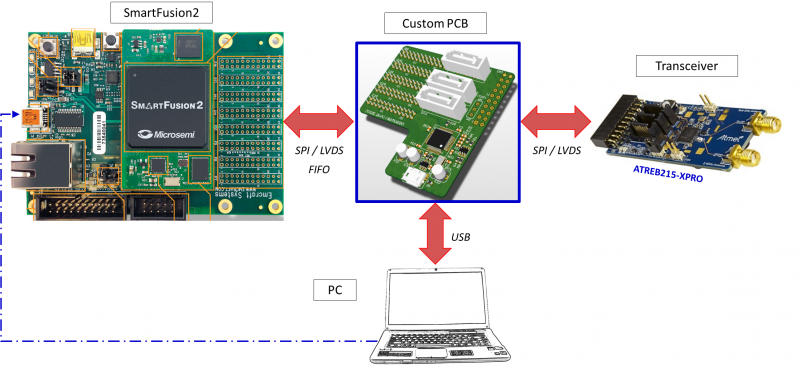Massive and rapidly increasing use of wireless devices is raising concerns about eventual saturation of the available spectrum in wireless communications, known as the spectrum scarcity problem. This issue is especially relevant for power- and resource-constrained devices, even more when considering the largely variable and adverse environmental conditions radio channels are usually subject to. Considering the case of a network of sensor nodes, a smart approach to face this problem is the use of Cognitive Wireless Sensor Networks (CWSNs), which consist in networks capable of modifying their communication parameters depending on the environmental conditions.
One of the ongoing research lines of the B105 Electronic Systems Lab focuses on the development of low-power CWSNs by designing sensor nodes using a Software-Defined Radio system (SDR). Specifically, an architecture based on the Atmel AT86RF215 transceiver and the SmartFusion2 System-on-Chip (SoC) is used to carry out certain cognitive tasks.
The specific objective of this project was to implement communication between the aforementioned elements and a personal computer (PC). To achieve that, a Printed Circuit Board (PCB) was developed to serve as an interface platform between the different hardware elements in the system. Then, the controllers required to manage communication between the transceiver, which acts as data source, and the PC, which is the receiver, are implemented on the FPGA embedded in the SmartFusion2 SoC.
For the successful realization of this project it was necessary to carry out both hardware and software development tasks. In addition, the programming languages C and VHDL were used, as well as the communication standard protocols Serial Peripheral Interface (SPI) and Low Voltage Differential Signaling (LVDS).

